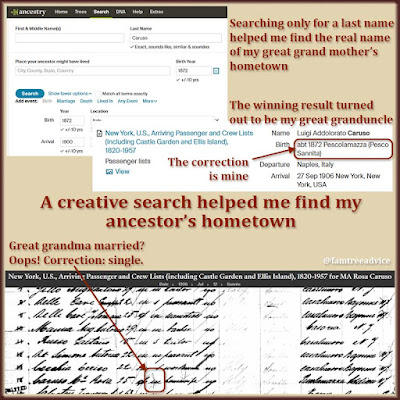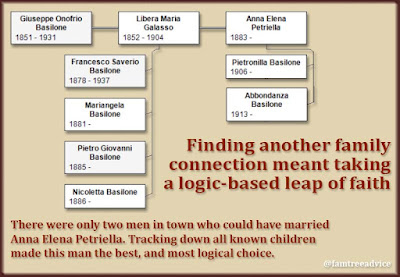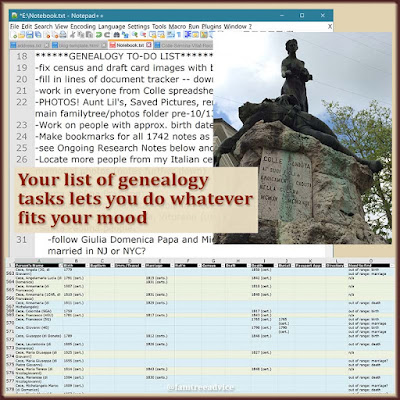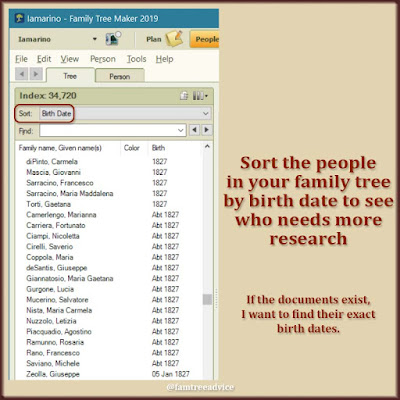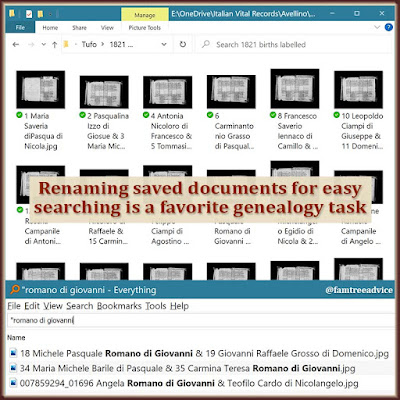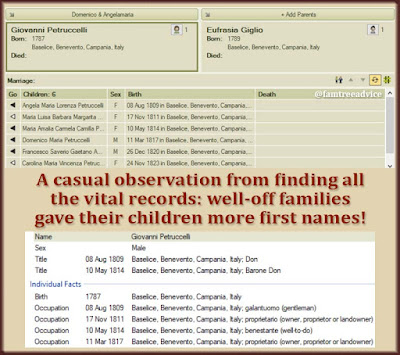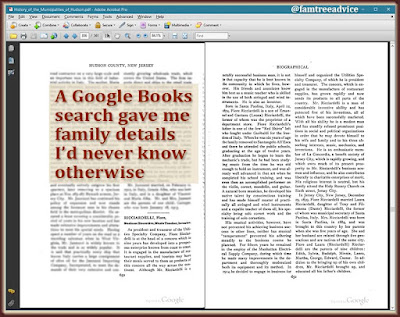I've been on a genealogy rampage lately—but in a good way. I'm tapping into my enormous database of vital records from my ancestral hometowns. And I'm using it to add about 100 people a day to my family tree.
Everyone from my ancestors' hometowns can fit into my family tree somehow. But right now, I'm going after my distant cousins. Here's how I'm doing it:
- I pick one of my direct ancestors, like a 4th great grandfather.
- I locate every one of their children.
- I find out who each child married, and I search for their children.
- I keep searching for children's children until I reach the end of the available vital records.
It's a blast to add whole families to my tree that some distant cousin is going to find through an Ancestry hint.
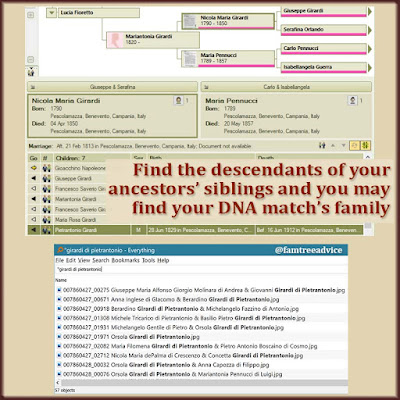 |
| What happens when you research your ancestors siblings? Your family tree grows to include hundreds or thousands of blood relatives. |
With all this recent growth, as of this writing, I have 36,434 people in my tree. Many of them have crazy relationships to me. Like step-father of the son-in-law of the 2nd great uncle of my great aunt's husband.
Now that I'm concentrating on blood relatives, I wondered how many of each type of cousin I've located. How many 1st cousins 3 times removed have I found? How many 3rd cousins 4 times removed?
To find out, I exported a current GEDCOM from my Family Tree Maker file. (Make sure you are the root person in your GEDCOM file.) Then I opened it with Family Tree Analyzer. I clicked Main Lists to see a spreadsheet view of everyone in my family tree. Then I clicked the Export menu at the top of the program and chose Individuals to Excel.
In one second flat, I had a spreadsheet with all the facts and people from my tree! I opened the file and sorted it by the RelationToRoot column. Then I filtered out any blank relationships, hiding them from view. (Family Tree Analyzer doesn't include crazy relationships like the one I mentioned above.)
 |
| Use Family Tree Analyzer to instantly export all your family tree facts to a spreadsheet. Then sort and filter to see how many types of cousins you've found. |
Now I can click with my mouse and pull it down to select relationships of the same kind. Then I can see at the bottom of the spreadsheet how many rows I've selected. Here's what I have.
I'm using an abbreviation below that I learned from another genealogist. C means cousin and R means removed, so 1C3R is a 1st cousin 3 times removed.
# of First Cousins in my family tree:
- 1C–5
- 1C1R–30
- 1C2R–108
- 1C3R–97
- 1C4R–190
- 1C5R–259
- 1C6R–166
- 1C7R–65
- 1C8R–10
# of Second Cousins in my family tree:
- 2C–44
- 2C1R–172
- 2C2R–29
- 2C3R–193
- 2C4R–439
- 2C5R–339
- 2C6R–114
- 2C7R–15
# of Third Cousins in my family tree:
- 3C–101
- 3C1R—112
- 3C2R—116
- 3C3R—556 Whoa!
- 3C4R—485
- 3C5R—179
- 3C6R—29
# of Fourth Cousins in my family tree:
- 4C–18
- 4C1R–21
- 4C2R–215
- 4C3R–361
- 4C4R–205
- 4C5R–44
# of Fifth Cousins in my family tree:
- 5C–16
- 5C1R–86
- 5C2R–159
- 5C3R–70
- 5C4R–44
# of Sixth Cousins in my family tree:
- 6C–19
- 6C1R–28
- 6C2R–16
- 6C3R–20
# of Seventh Cousins in my family tree:
- 7C–9
- 7C1R–6
- 7C2R–3
# of Grand Aunts and Uncles in my family tree:
- grandaunts and uncles–14
- 1st great grandaunts and uncles–46
- 2nd great grandaunts and uncles–68
- 3rd great grandaunts and uncles–103
- 4th great grandaunts and uncles–89
- 5th great grandaunts and uncles–77
- 6th great grandaunts and uncles–77
- 7th great grandaunts and uncles–9
# of Great Grandparents in my family tree:
- 1st great grandparents–8
- 2nd great grandparents–16
- 3rd great grandparents–31 only 1 missing!
- 4th great grandparents–53
- 5th great grandparents–84
- 6th great grandparents–108
- 7th great grandparents–72
- 8th great grandparents–20
- 9th great grandparents–5
I love seeing this breakdown of my people. I'm astonished to learn that I've identified three of my seventh cousins twice removed. The only thing keeping me from finding 8th cousins is a lack of records. But I'm psyched to keep adding more and more cousins. And their spouses. And their spouses' families.
You say you don't venture beyond your direct ancestors? These cousins are your people, too. Does everyone ask you if you've finished your family tree yet? Tell them you have several hundred cousins still to find. And their spouses. And their spouses' families. Tell them this is one puzzle that's never finished!
Find out what else you can do with Family Tree Analyzer:

